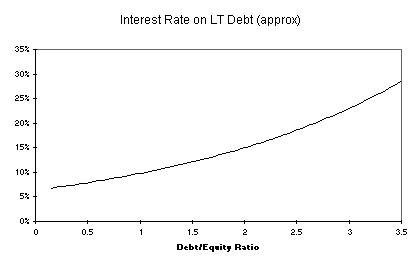Data - Finance - Long-Term Debt
Raising debt is often the easiest way to get money. However it is frequently expensive in terms of the interest rate and there is an effective limit as to how much can be raised due to the burden of high fixed interest charges. The higher the debt/equity ratio of the organization, the more risk it is perceived to have by investors and the higher the interest on any further borrowing.
The firm may choose to raise finance using debt instruments (for example, debentures, notes, or mortgages). Interest will be charged on these long term debts based upon the level of risk of the firm, which is determined by the debt/equity ratio (or "gearing"). The higher the debt/equity ratio and therefore risk, the more interest you pay. The lowest interest rate is at 8% which increases to more than 20% if the debt/equity ratio increases.
The financial market will not allow you to raise debt beyond a debt/equity ratio of 3. At these high levels they consider your firm to be too risky. At debt/equity levels of greater than about 2 you can expect to have to pay high rates of interest. Make sure that you have very profitable uses for the money!
The curve below allows you to estimate the interest rate on long term debt.
